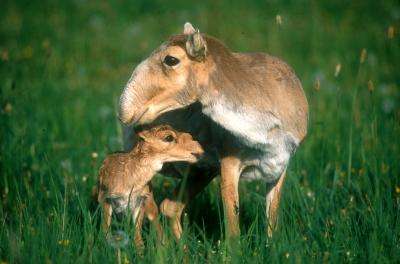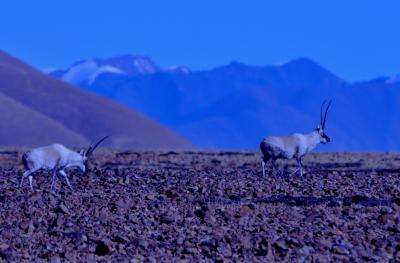New study reveals dangers to biological diversity from global cashmere garment industry

A new study by the Wildlife Conservation Society and Snow Leopard Trust reveals a disturbing link between the cashmere trade and the decay of ecosystems that support some of the planet's most spectacular yet little-known large mammals.
The study finds that as pastoralists expand goat herds to increase profits for the cashmere trade in Western markets, wildlife icons from the Tibetan Plateau to Mongolia suffer – including endangered snow leopard, wild yak, chiru, saiga, Bactrian camel, gazelles, and other remarkable but already endangered species of remote Central Asia. Ecological effects of the growth in goat herds include increasing conflicts with pastoralists, predation by dogs on wildlife, retaliatory killing of snow leopards, and displacement of wildlife away from critical food habitats.
The study appears in the August issue of the journal Conservation Biology. Authors include: Joel Berger of WCS and University of Montana, Bayarbaatar Buuveibaatar of WCS Mongolia, and Charudutt Mishra of the Snow Leopard Trust.
Goats from this region produce high-quality fibers that, when processed into cashmere, are highly sought by western consumers. With 90 percent of the world's cashmere emanating from China and Mongolia, the vast highlands and open spaces that once were populated by wild camel and wild yak, Przewalski's horse, chiru, saiga antelope, Tibetan gazelle, kiang, khulan, and snow leopard are increasingly dominated by domestic goats and other livestock.
The study results from fieldwork in India, western China, and Mongolia and builds upon economic data including herder profits, changes in livestock numbers, and the relative abundance of wildlife.

"The consequences are dramatic and negative for iconic species that governments have signed legislation to protect, yet the wildlife is continually being squeezed into a no-win situation," says lead author, Joel Berger, a biologist for the Wildlife Conservation Society and professor at University of Montana. "Herders are doing what we would do – just trying to improve their livelihoods, and who can blame them?"
The purpose of the study is to raise awareness among western consumers about the origins of cashmere and its growing impact on wildlife. The authors suggest that the study should serve as the beginning of a dialog among the garment industry, cashmere herders, and conservationists to address and mitigate these impacts.
WCS has already begun to help tackle the problem by engaging with the Responsible Ecosystems Sourcing Platform (RESP), a public-private partnership initiative aimed at addressing sustainability issues from the beginning to the end of select supply chains across the fashion, cosmetics and jewelry industries, including cashmere.
"In the absence of commitment across global and local scales, the iconic wildlife of the world's highest mountains and great steppes will cease to persist as they have for millennia. Rather than serving as symbols of success, these species will become victims of fashion," said Peter Zahler, WCS Deputy Director for Asia Programs.
Journal information: Conservation Biology
Provided by Wildlife Conservation Society




















